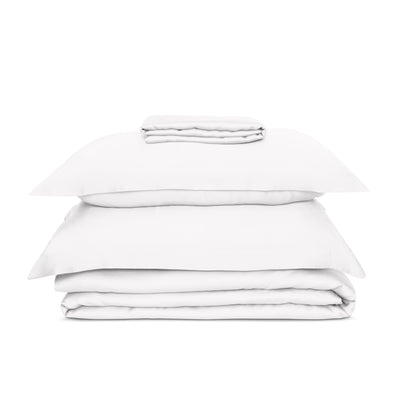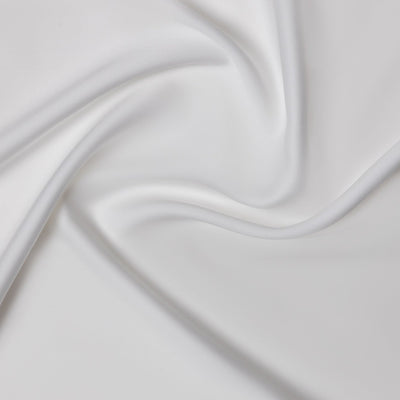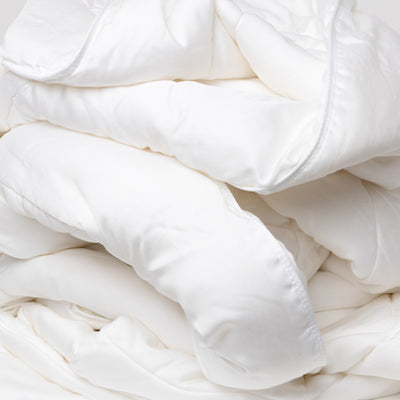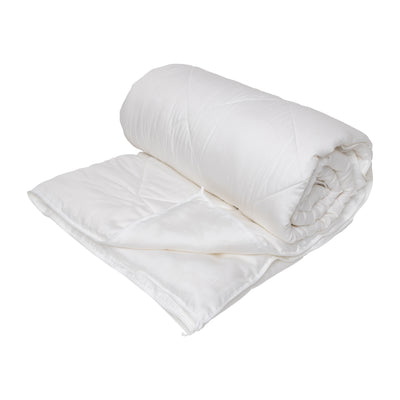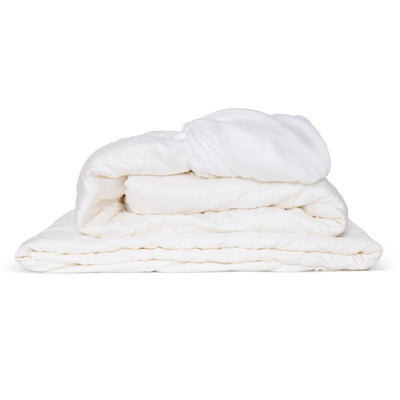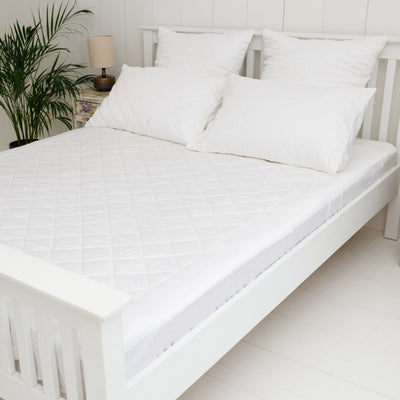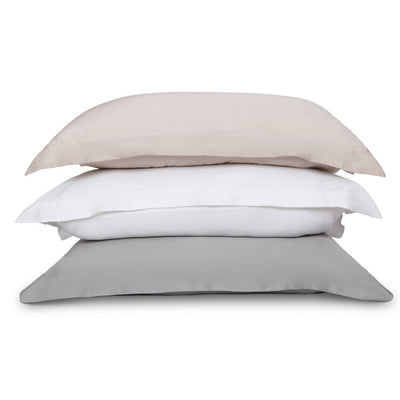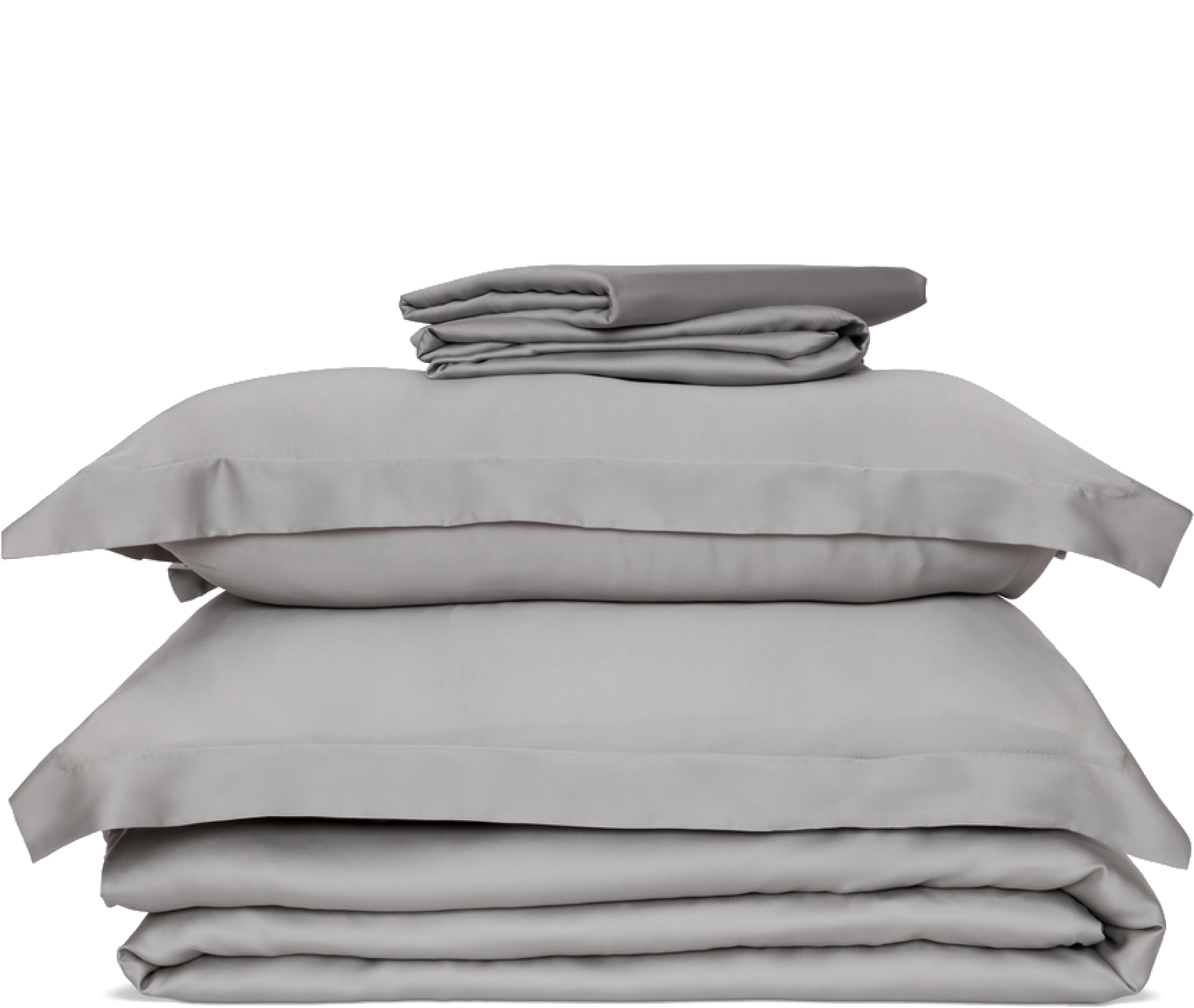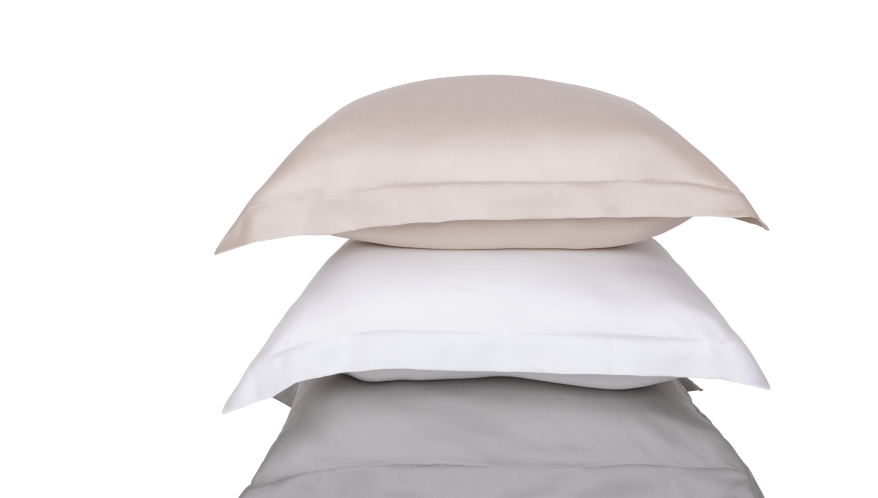Packaging is something that’s commonplace in all of our lives – we can’t avoid it! Whether it’s picking up a drink from the supermarket, buying new clothes online, or topping up your office supplies, almost everything we purchase comes with some sort of packaging.
But, with packaging playing such a huge part in our daily lives, it’s important to consider the impact it might be having on the environment, and how we can make more eco-conscious choices.
In this article, we’ve explained the common problems with plastic packaging, what eco-friendly packaging is and the benefits, and why it’s important to support brands that promote sustainable practices.
What are the problems with plastic packaging?
The main purpose of packaging is to keep products protected from damage before being bought and enjoyed by customers. However, often, the packaging protecting your food, clothes, and necessities is made from a type of plastic.
Plastic packaging is favoured by a lot of companies for various reasons, most notably because it’s among the most convenient materials to source and it can be used for a wide variety of products. However, while there are some initial advantages to using plastic packaging, there are a few problems that come with the decision:
- Most ends up in landfill - while commonly considered to be a recyclable material, about 70% of polyethylene, one of the more widely used plastics for packaging, actually ends up in landfill or the ocean. Not only does this pollute the environment, but it destroys wild habitats.
- Takes hundreds of years to break down - plastic is a long-lasting material, which means it’ll sit in landfill without decomposing. Rather than breaking down over a matter of days or weeks like eco-packaging, plastic takes hundreds of years, all while releasing harmful toxins into the earth. These toxins can then begin to disrupt local wildlife.
- Manufacturing releases CO2 - the process of manufacturing plastic packaging largely revolves around the refining the crude oil. This process involves heating the oil, which then emits incredible amounts of carbon dioxide into the atmosphere.
How much plastic is produced each year?
We’ve explained the drawbacks of using disposable plastic for bagged or packaged goods, so you might be surprised to hear just how much is still in circulation.
Despite the current climate emergency, according to government data, the UK is estimated to still produce over five million tonnes of plastic each year, of which nearly half is for packaging.
What is eco-friendly packaging?
When we talk about eco-friendly packaging, what we’re really referring to is packaging that’s non-detrimental to the earth and environment.
Often also referred to as green packaging, eco alternatives are made using biobased (from renewable biomass i.e. plants), biodegradable (naturally decomposes with help from bacteria), or recycled materials that have a sustainable life cycle. But what else constitutes eco-packaging?
What makes packaging eco-friendly?
To be considered environmentally-friendly, packaging must meet a series of key criteria centred around green practices. While some materials might tick some of the boxes, to be a viable eco-packaging solution, they need to meet all factors:
Sustainable materials are those that are either recycled, renewable, or sourced via environmentally- and socially-friendly means. For instance, plastic can’t be considered sustainable, because it relies on the refining of crude oil, a finite fossil fuel, whereas paper and cardboard can as they’re both sourced from trees.
2. Packaging is either recyclable or compostable
To qualify as eco-friendly packaging, a material must easily be recycled or composted at home after use. Both of these disposal solutions are environmentally-responsible, and help to ensure your waste isn’t negatively impacting the earth, atmosphere, and climate levels.
3. The design is optimised for maintaining product quality
While it’s helpful to choose a material that easily composts, you can’t overlook the primary function of packaging: to maintain the quality of the product it’s protecting. If product quality is compromised in any way, at any point of the sales journey, then a packaging material can’t be considered a long-term eco solution. For instance, paper is a renewable resource, but doesn’t necessarily perform well in all packaging scenarios.
4. The cost of production is feasible for long-term application
In much the same way that the quality of your eco-packaging needs to be at a certain level to be considered a long-term solution, as does its price point. If a packaging material is too expensive to be adopted across the board, then it’s not feasible for long-term application.
What are the benefits of eco-friendly packaging?
We’ve looked at the negative impact traditional packaging materials like plastic can have on the environment, but, on the flipside, what are some of the benefits of choosing eco-friendly alternatives? We’ve explore the four core positives that come from selecting sustainable packaging.
Reduces carbon footprints
Your carbon footprint refers to the amount of greenhouses gasses that are released into the environment and atmosphere as a result of your choices. Examples of actions that contribute to your carbon footprint can be as simple as choosing to drive to work instead of taking the bus, or buying a product protected by plastic packaging rather than an eco-alternative.
Because environmentally-friendly packaging is a sustainable solution, its manufacturing and disposal doesn’t have nearly as big of an impact on your carbon footprint as traditional materials.
Biodegradable
We’ve touched on it already, but biodegradable packaging essentially means that a material is capable of breaking down over a short period of time with the help of micro-organisms. Biodegradable items will also naturally absorb into the environment with no ecological harm.
For instance, eco-friendly packaging materials such as paper decompose in just a couple of weeks. In contrast, traditional plastic packaging will remain intact for hundreds of years before starting to break down, during which time, toxins will have polluted the earth for centuries.
Easily reused or recycled
A large part of what makes packaging eco-friendly is that it can be easily reused or recycled. This is to do with the life-cycle of the packaging, and the hope that the material will continue to be of use long after it’s served its initial purpose. Because eco-packaging is easily recyclable, its useful lifespan is far greater than the likes of disposable drinks bottles and plastic wrap.
Easily disposable
One of the greatest practical benefits of naturally-sourced packaging is that it’s fairly easily disposed of. Even if you forget to separate your rubbish or you’re not in the habit of composting, as a worst-case scenario, your packaging will decompose in landfill within a matter of weeks, with little-to-no negative impact on the environment
Why is eco-friendly packaging so important?
The overwhelming reason to choose eco-friendly packaging is that it reduces the rate of plastic pollution. Whether it’s destroying habitats, harming wildlife, or releasing dangerous contaminants into the earth, there are no environmentally-beneficial reasons to use plastic for single-use packaging.
Instead, making the decision to choose products sold with plant-based or recyclable packaging not only helps to reduce your own personal carbon footprint, but also significantly lowers the amount of waste that’s slowly but surely destroying local environments and contributing to dramatic climate change.
The importance of investing in sustainable brands
We’ve discussed the benefits of making sustainable choices when it comes to the products you buy, depending on the type of packaging used, but this should also be applied to the brands you buy from.
By supporting brands that commit to ethical practices and sustainable packaging, you can help to trigger a shift towards long-term eco solutions.
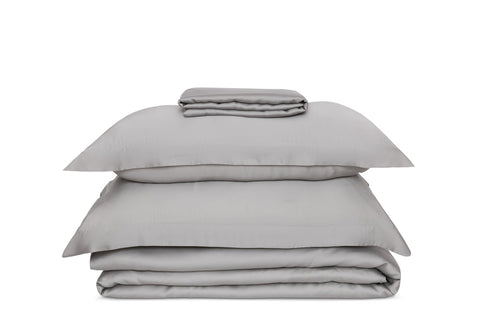
Shop Ethical Bedding's sustainably packaged eucalyptus silk set
How Ethical Bedding practices sustainability
At Ethical Bedding, our mission is to make greener living the standard across the UK. As part of this, we follow a series of simple environmentally-friendly practices that ensure we’re completely carbon neutral. For example:
- All of our packaging is minimalistic, easily-recyclable, and made from previously recycled products.
- We use raw sustainable materials to create each of our luxury products, including eucalyptus pillowcases and bamboo bedding.
- While each product is designed to last, they’re all also biodegradable, so, when the time does come to dispose of your bedding, it’ll quickly decompose with no negative consequences.
For even more interesting insight into how you can make sustainable choices and small eco steps, head on over to our blog. Alternatively, check out our complete collection of environmentally-friendly pillows, toppers, and duvets for luxury bedding that’ll last a lifetime.


